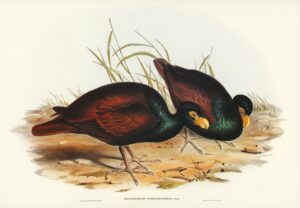The Zoological Society of London has joined forces with Network Rail to monitor British wildlife at a tremendous scale. Using AI-controlled camera traps and microphones they have recorded wildlife at three sites to assess their biodiversity.
The project began in the spring of 2022. Researchers wanted to trial a range of monitoring technologies to evaluate National Rail’s progress toward their biodiversity mission: no net loss of biodiversity by 2024 and a net gain by 2040. Network Rail owns 52,000 hectares of land in the UK and could play a key role in protecting and restoring wild spaces.

Foxes were the mammal most often caught on camera. Photo: Shutterstock
Only AI made it possible
In this pilot phase of the project, researchers set up 32 camera traps and 33 acoustic sensors at three sites in the Greater London Area: Barnes, Twickenham, and Lewisham. The cameras captured almost 40,000 images and thousands of hours of audio data.
“We have captured tens of thousands of data files and thousands of hours of audio from these test sites and identified all sorts of animals from them,” Anthony Dancer, conservation specialist at ZSL told The Guardian. “We couldn’t have done it at that scale using human observers. Only AI made it possible.”
Across all three sites, foxes were the most common mammal, and wood pigeons were the most common bird captured on camera. The most common birds identified through acoustic monitoring were the European robin, the Eurasian wren, and the Eurasian magpie.

Eurasian blackcap. Photo: Shutterstock
Biodiversity indicators
The AI identified dozens of other animals, such as deer, hedgehogs, six species of bat, and 30 species of bird. Species like blackbirds, great tits, and Eurasian blackcap are good biodiversity indicators. All three bird species require healthy ecosystems to flourish. Detecting them at the sites is “encouraging and provides important benchmarks for measuring biodiversity in the future,” Neil Strong, biodiversity manager for Network Rail, explained
The AI also identified five bird species on the UK Red List. The research also identifies the exact locations of bat roosts under railway bridges, which will allow Network Rail to protect these sites.
In some areas, the study revealed that animals like foxes and cats were using the railways as efficient movement corridors. Other species, such as hedgehogs, were getting trapped in certain locations. Based on these findings, Network Rail plans to cut small holes in the base of their fencing to create “hedgehog highways.”

The common pipistrelle. Photo: Shutterstock
Ready for the rest of the UK
The next stage of the project is expansion. The research team hopes soon to expand the project outside of Network Rail areas.
“We aimed to demonstrate that AI-led techniques, combining acoustic and camera traps, can be effective in surveying wildlife,” Dancer told The Observer. “This will tell us how species respond to climate change and how we should manage vegetation, not just next to railways, but along roads and other places.”






